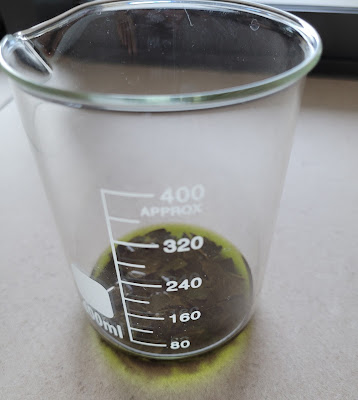Chromatography of leaves
Today I will tell you about another experiment we have done with plants. This one is about seeing the types of coloured chemicals the plant uses to catch energy from the sun. The main one is called chlorophyll and is the one that makes plants look green. But you will see it is not the only one.
Chromatography is a way of separating different coloured chemicals by getting them to climb a piece of paper. Different chemicals climb at different speeds and you are able to see the lines or shades they create. Scientists call these chemicals: pigments.
In our experiments we are using rubbing alcohol. In Australia you can find the brand "Isocol" in all supermarkets. All you need to do is to cut and squeeze a few leaves into a jar, add enough alcohol to cover the pieces and let it rest for a few hours. After a while, the alcohol gets the colours out of the leaves.
The final step is to put a paper strip hanging in the middle. Make sure it doesn't touch the walls of the jar. Here you can see some of our jars with different types of leaves.
In chemistry labs they use special paper for chromatography. We experimented with different types of paper including kitchen towel, coffee filters and even watercolor paper but the best for us was normal writing paper. You should try with your own papers too and use the one that works best.
These are the all 4 types of plants we used and the chromatography results.
As you can see there is a light green and a dark green. This is because there are two types of chlorophylls: "a" and "b". You can also see yellow. This is called "carotene". The purple leaves have also some purple and pink chemicals. Normally you don't see those other colours but they are there. They are visible in autumn because the chlorophyll dies and then the leaves turn yellow or brown or some other colour.
Samples 4 and 5 are from the same plant. 4 was from the green leaves and 5 from the pink leaves. In the photo above you can see this plant has green leaves when they are fresh. When they start dying they turn light green, then yellow and finally pink before they die completely. As you can see sample 4 has yellow and green pigments but sample 5 only has the purple one. The chlorophyll and the carotene are already gone,





Comments
Post a Comment